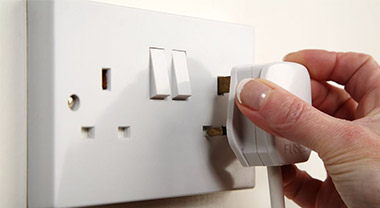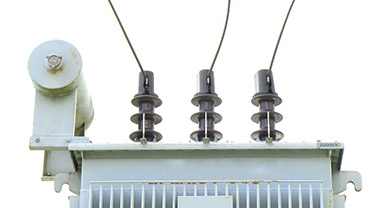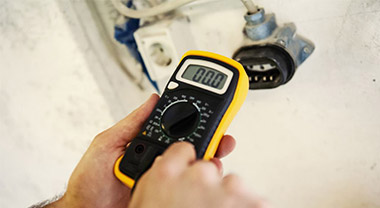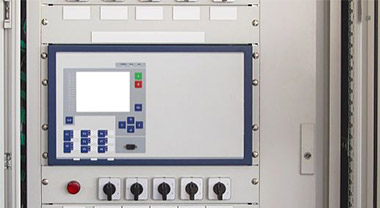How to calculate the breaking capacity of a circuit breaker?
Select the circuit breaker breaking capacity which depends on the short circuit capacity of the power system.
Rated capacity and impedance voltage, internal resistance of the power line voltage distribution system short-circuit capacity factor depends on the transformer.
You said TCL for miniature circuit breakers, in a nutshell: building electrical 6kA generally sufficient, if the distribution box and the central distribution room too close, select 10kA; if you are in the center of the power distribution room, it recommended to choose 15kA .
As the difference between lighting and power lines, not the breaking capacity size, but different in that tripping curves: the curve C selected lighting circuit breaker, such as TIB1-63 / 3P C20A; power circuit breakers D is selected to cancel, as TIB1- 63 / 3P D20A.
Generally divided ultimate breaking capacity Icu breaking capacity and operating Ics (regardless of many micro-off), if Icu = 60KA, then when the 60KA fault current in the line, the circuit breaker can be safely cut off the circuit, without the occurrence of contact welding, explosion or other abnormal conditions. Note ultimate breaking of the circuit breaker did not allow reuse (often ineffective), must be replaced. If Ics = 60KA, after breaking the current, allowing the circuit breaker closing reused, but also the emergency to be replaced. Now a lot of good can be done breaker Icu = Ics. Of course, for Icu and Ics, countries have strict definition of the relevant test, more than simply talk.
Some large short-circuit current system tends to be large, many Icu breakers are more than up to 100KA.
Limit short circuit breakers breaking capacity, short-circuit breaking capacity and short-time withstand current rating
Limit short-circuit breaking capacity (Icu), it refers to certain experimental parameters (voltage, short circuit current, power factor) conditions, after some tests program, can be connected, breaking the short-circuit current, this pass through the rear, not continue to carry the rated current breaking capacity of. The test procedure is its 0-t (online) CO ( "O" as breaking, t is the time interval, usually 3min, "CO" represents immediately after making and breaking). After the test and inspection to verify tripping characteristic frequency withstand voltage. Rated short-circuit breaking capacity (Ics), refers to certain experimental parameters (voltage, short circuit current and power factor) conditions, after a certain test procedures, can be connected, breaking the short-circuit current, after this through the rear, but also continue to carry the rated current breaking capacity, which is the test procedure O-t (online) CO-T (online) CO.
Short time withstand current (Icw), refers to a certain voltage, short circuit current, power factor, and the ability to endure 0.05,0.1,0.25,0.5 1s or trip the circuit breaker is not allowed, the short delay is deacetylated Icw when the buckle, the electric stability and thermal stability evaluation index of the circuit breaker, it is for class B circuit breaker, the minimum is usually Icw: when In≤2500A, or it is 5kA 12In, and in> 2500A when it is 30kA (DW45_2000 of Icw is 400V, 50kA, DW45_3200 of Icw is 400V, 65kA).
Short-circuit breaking capacity test extremely harsh conditions (breaking time, the second on-off), since it will continue to carry the test current rating (the number of which is 5% of the number of life 25), so that it not only to verify tripping characteristic, frequency voltage, but also to verify the temperature rise. IEC947_2 (as well as the new 1997 IEC60947_2) and national standards GB140482 our requirements, Ics may limit short-circuit breaking capacity Icu values of 25, 50%, 25%, 25%, 25, 75, 25 and 100% (50% for the Class B circuit breaker 25, 75 25 25% and 100%, B 25% no 25 in view of that it is used so that the majority of the main line protection).
An important principle of the above-mentioned selection of the circuit breaker is the circuit breaker short-circuit breaking capacity ≥ lines prospective short circuit current, the short-circuit breaking capacity of the circuit breaker generally refers to its ultimate breaking capacity.
Whether Class A or Class B circuit breaker, their short-circuit breaking capacity is less than the majority of its ultimate breaking capacity of Icu. Class A: DZ20 series Ics = 50% 25 ~ 77% 25Icu, CM1 series Ics = 58% 25 ~ 72% 25Icu, TM30 series Ics = 50% 25 ~ 75% 25Icu, (individual products Ics = Icu). Class B: DW15 series Ics = about 60% 25 Icu, (such as individual 630AIcs = Icu, but only when the short-circuit breaking capacity 400V 30kA), DW45 series Ics = 62.5% 25 ~ 80% 25Icu. Either Class A or Class B circuit breaker, Icu Ics percentage value as long as it is in line with IEC947_2 (or GB14048.2) standard is a conforming productProducts. It should be mentioned that all the short-circuit breaking capacity of the circuit breaker (Icu whether or Ics) are periodic component rms. Current "C0" of the short-circuit test in C (Close ON) is the peak current Ich. When the short-circuit breaking tests carried out, voltage, short circuit current (rms) and power factor (COS) has been adjusted at the test station, it will be determined on-current. ON current test ( "C" test), the peak current is to assess the contacts, and other conductive material subjected to an electric repulsion and ability and thermal stability, what kind of RMS current (breaking current), in their respective under power factor, there will be what kind of peak current, peak current user no need to consider this argument.




